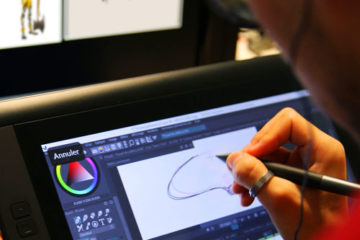adverbs for summer
126. As their name implies, these verbs link adjectives with the subjects they modify. (well) → I saw him. Notice how "too" is a disjunct in the sentence immediately before this one; that same word can also serve as an adjunct adverbial modifier: It's too hot to play outside. Then I wrote my first Six Word Story--and it was really easy. Dr. Richard Nordquist is professor emeritus of rhetoric and English at Georgia Southern University and the author of several university-level grammar and composition textbooks. In this sentence, the adjective sad modifies the noun smile (the subject of the sentence) and the adverb deeply modifies the verb touched. [= looking back from the autumn] A phrase like in three months' time can suggest a concrete time, rather than a point before which something happens, so we would usually add an adverb to avoid ambiguity: Adverbs usually follow the verbs they modify, but they may also appear directly in front of the verb or at the very beginning of a sentence. 12. MacMillan Publishing Company: New York. A connective is a word that joins one part of a text to another. As a general principle, shorter adverbial phrases precede longer adverbial phrases, regardless of content. When two or more adjectives precede a noun, they are usually separated by commas. When the adverb does not fit into the flow of the clause, it is called a disjunct or a conjunct and is often set off by a comma or set of commas. Placing adjectives after a noun is a way to add emphasis to a sentence. A boy is camping in the woods (alone for some reason) when a vicious creature creeps up behind him. Would the world ever experience warmth again? He paused briefly and looked at the white polar bear. This is a free multiple-choice quiz that you can do online or print out. Adverbs can take the initial, mid and end position. (noun) Sentence challenge! Note, however, that not all adverbs end in -ly. The words lovely, lonely, motherly, friendly, neighborly, for instance, are adjectives: When a group of words not containing a subject and verb acts as an adverb, it is called an adverbial phrase. Check your answers below when you're finished. Examples our own. (5) _____, a scooter appeared out of nowhere and almost hit me! Your sewing machine needs some oil. The adjective thirsty, for example, comes from thirst, which may be either a noun or a verb. Like adjectives, adverbs can have comparative and superlative forms to show degree. English Exercises > adverbs exercises. A viewpoint adverb generally comes after a noun and is related to an adjective that precedes that noun: You will sometimes hear a phrase like "scholastically speaking" or "financially speaking" in these circumstances, but the word "speaking" is seldom necessary. The most basic modifiers are adjectives and adverbs. The clearest arrangement will depend on the intended meaning of a sentence as adverbs are not always flexible. Anything beyond that, you're better off with a vertical list that uses numbers (1, 2, 3, etc.). I instantly knew that I would love my new book. Satzbau Englisch - Stellung der Adverbien :: Online Englisch Lernen mit kostenlosen Übungen, Erläuterungen, Prüfungsvorbereitung, Spielen, Unterrichtstipps rund um die englische Sprache. A focus adverb indicates that what is being communicated is limited to the part that is focused; a focus adverb will tend either to limit the sense of the sentence ("He got an A just for attending the class.") Choose the correct sentences with adverbs of purpose so that and in order to from the list and write them in the blanks. Adjectives modify nouns, while adverbs modify verbs, adjectives, and other adverbs. Write the narrative from both points of view. When using adverbs in writing, try out a few different positions until you find the composition that makes the most sense. Summer Boost. Clearly, it would be better to move the underlined modifier to a position immediately after "they reported" or even to the beginning of the sentence so the poor man doesn't die on television. Third (not thirdly), after you get beyond "secondly," it starts to sound silly. (in summer) → Cats can hear. Many prepositions have related adverbs. The addition of modifiers, words that add to the meaning of other words, is a common way of expanding and adding depth to a simple sentence. 2nd Grade Adverbs Worksheets Teach your students to recognize words that describe verbs with this set of adverb worksheets for second graders. For this section on intensifiers, we are indebted to A Grammar of Contemporary English by Randolph Quirk, Sidney Greenbaum, Geoffrey Leech, and Jan Svartvik. Once you write your first, you can write a whole army of them. Here are how Six Word Stories can be used as a great writing prompt. The adverbs enough and not enough usually take a postmodifier position: (Notice, though, that when enough functions as an adjective, it can come before the noun: The adverb enough is often followed by an infinitive: The adverb too comes before adjectives and other adverbs: If too comes after the adverb it is probably a disjunct (meaning also) and is usually set off with a comma: The adverb too is often followed by an infinitive: Another common construction with the adverb too is too followed by a prepositional phrase for + the object of the preposition followed by an infinitive: Adjectival clauses are sometimes introduced by what are called the relative adverbs: where, when, and why. Can you use adverbs in your writing today? See if you can identify the adjectives in the sentences below: In each of these sentences, the adjective (rough, cruel, wet) modifies the subject but follows the linking verb (was, are, is). Practice Adding Adverbs . Read on to find out our top tips and examples of adverbs of frequency. Adverbs of Frequency (e.g. Nordquist, Richard. Usually, you can add a numerical quantity to such nouns, like “two cats” or “two students”. A handful of adverbs have two forms, one that ends in -ly and one that doesn't. First (not firstly), it's unclear what the adverb is modifying. In the following sentence, an adverb of time precedes an adverb of frequency because it is shorter (and simpler): A second principle: among similar adverbial phrases of kind (manner, place, frequency, etc. "Adding Adjectives and Adverbs to the Basic Sentence Unit." I have never understood her. Jose has spent years preparing for this event; In a roomful of elderly people, you must remember to speak, Investing all our money in snowmobiles was probably not a. It is similar to The Royal Order of Adjectives, but it is even more flexible. Connectives can be conjunctions, prepositions or adverbs. 3. ), Review the section on Being Concise for some advice on adverbs that we can eliminate to the benefit of our prose: intensifiers such as very, extremely, and really that don't intensify anything and expletive constructions ("There are several books that address this issue."). (9) The summer is … Within the normal flow of text, it's nearly always a bad idea to number items beyond three or four, at the most. (patiently) → My father goes fishing. (always) → Your bedroom is. A disjunct frequently acts as a kind of evaluation of the rest of the sentence. 4. https://www.thoughtco.com/adding-adjectives-and-adverbs-to-the-sentence-1689665 (accessed March 19, 2021). Adding Adjectives and Adverbs to the Basic Sentence Unit. Nordquist, Richard. Let Johnny and Inel get your class up and moving, while they learn about adjectives and adverbs. That's impossible!" Search our Essays and Worksheets Latest Fillable Addition Worksheet – Addition by 1 – Magical December 27, 2020 Reading comprehension for kids – 26/12/2020 December 26, 2020 Blend Words Matching Worksheets For Grade 1 December 24, 2020 Reading Comprehension for Kids – 12/22/2020 December 22, 2020 Blend Words Worksheets for Grade 1 December 21, 2020 […] "Adding Adjectives and Adverbs to the Basic Sentence Unit." (last week) → He walks his dog. It will rain this evening. Prepositional phrases frequently have adverbial functions (telling place and time, modifying the verb): And Infinitive phrases can act as adverbs (usually telling why): But there are other kinds of adverbial phrases: Adverbs can modify adjectives, but an adjective cannot modify an adverb. When this is true, as it almost always is, the adverb is called an adjunct. Used with permission. Adverbs of manner are particularly flexible in this regard. Adverbs Mix. Online quiz to test your understanding of English adverbs of frequency. Modifiers can sometimes attach themselves to and thus modify words that they ought not to modify. If they start smoking those awful cigars, We've told the landlord about this ceiling again and again, and. 1994. Second (not secondly), it's unnecessary. And a why clause will modify the noun reason: We sometimes leave out the relative adverb in such clauses, and many writers prefer "that" to "why" in a clause referring to "reason": Authority for this section: Understanding English Grammar by Martha Kolln. Countable nouns can be expressed in plural form, usually by adding an “s” to the singular form. The Basic Rules: Adjectives. Broadly speaking, the adverb is preceding the word it's modifying. Very, quite, always, almost, and often are common adverbs that are not formed from adjectives and therefore do not end in -ly. ThoughtCo. See if you can identify the adjective and adverb in the sentence below and the words they modify. Complete each sentence below with the adjective form of the italicized noun or verb. As part of the new primary curriculum (revised in 2014) children are encouraged to refer to connectives using the correct grammatical terms (conjunction, preposition and adverb) rather than the umbrella term 'connectives'. Although the entire clause is adjectival and will modify a noun, the relative word itself fulfills an adverbial function (modifying a verb within its own clause). At the extreme edge of this category, we have the purely conjunctive device known as the conjunctive adverb (often called the adverbial conjunction): Authority for this section: A University Grammar of English by Randolph Quirk and Sidney Greenbaum. As we will see, adverbs often tell when, where, why, or under what conditions something happens or happened. (usually) 11. Comparative adverbs. Which are the adverbs in the sentences below? You could do lots with language, antonyms to describe the two characters, adverbs to describe the action. It was fantastic! Here are two more disjunctive adverbs: Conjuncts, on the other hand, serve a connector function within the flow of the text, signaling a transition between ideas. Intensifiers are said to have three different functions: they can emphasize, amplify, or downtone. Although negative constructions like the words "not" and "never" are usually found embedded within a verb string "He has never been much help to his mother." / He quickly got dressed. The part of a text or statement that surrounds a particular word or passage and determines its meaning. But how do you teach this to your students? What does context mean? Complete the following sentences with the adverb form of the italicized adjective. Many adjectives are formed from nouns and verbs. Thus we would say that "the students showed a really wonderful attitude" and that "the students showed a wonderfully casual attitude" and that "my professor is really tall, but not "He ran real fast.". 10. The adverb softly, for instance, comes from the adjective soft. Also, in such a list, don't use adverbs (with an -ly ending); use instead the uninflected ordinal number (first, second, third, fourth, fifth, etc.). My girlfriend completely forgot my birthday. Adverbs that number in this manner are treated as disjuncts (see below. Many adverbs are formed by adding -ly to an adjective. Regardless of its position, an adverb is often neatly integrated into the flow of a sentence. When that happens, the introductory adverbial modifiers are usually set off with a comma. Note, however, that not all adverbs end in -ly. Exercise on adverbs of time. Many adverbs are formed by adding -ly to an adjective. Dad builds bonfires outside on summer nights. (rarely) → She waited. The parts of speech. (2) _____ we arrived in Rome, we (3) _____ went to the hotel and took a long nap. Longman Group: Essex, England. A countable noun is usually something you can count quantitatively. When you're done, check your answers. adjectives and adverbs, phrasal verbs, collocations, relative clauses, linkers, one or two idioms. Think of a suitable start and finish for your article Longman Group: London. We were in London. Devise a set of instructions on how to avoid being caught by a cat. Adverbs Printable Worksheets ... Adverbs describe action, and with these interactive adverbs worksheets, your students will be adding some seriously action-packed description to their writing! 2. The adverbs that most frequently appear at the end of the sentence are: adverbs of frequency: usually, normally, often, frequently, sometimes, occasionally; adverbs of manner (answering the question how): slowly, quickly, badly, silently; adverbs of time: today, already, last week, this year. We go to our native place in summer. Adverbs of Purpose ESL Matching Exercise Worksheet An ESL matching exercise worksheet for kids to study and practice adverbs of purpose. ThoughtCo, Aug. 27, 2020, thoughtco.com/adding-adjectives-and-adverbs-to-the-sentence-1689665. Occasionally, though, adjectives follow the nouns they modify. KS1 English: Verb Tenses with Karim and Hacker. Modal verbs are defined by their inability to conjugate for tense and the third person singular (i.e., they do not take an “-s” at the end when he, she, or it is the subject), and they cannot form infinitives, past participles, or present participles. Write a recount from the cats point of view. Students will build upon the previous grammar concepts while using a familiar worksheet format. (just) 12. Retrieved from https://www.thoughtco.com/adding-adjectives-and-adverbs-to-the-sentence-1689665. ... e.g. they are technically not part of the verb; they are, indeed, adverbs. Look at the pictures and read the sentences. Karim Zeroual and Hacker T. Dog have a song and routine for Key Stage 1 pupils. : always, never, seldom, usually) Adverbs of frequency are put directly before the main verb. / My girlfriend forgot my birthday completely. We often use more and most, less and least to show degree with adverbs: The as as construction can be used to create adverbs that express sameness or equality: "He can't run as fast as his sister.". ... My parents / never / travel / in summer / abroad. 4rth Edition. Here are some examples: Adverbs (as well as adjectives) in their various degrees can be accompanied by premodifiers: This issue is addressed in the section on degrees in adjectives. Site members have full access to an ad-free, print-friendly version of the site. The following adverbs of frequency appear in various points in these sentences: Indefinite adverbs of time can appear either before the verb or between the auxiliary and the main verb: There is a basic order in which adverbs will appear when there is more than one. Children are encouraged to use adverbs in their story-writing in Key Stage 2.These are some of the methods teachers might use to help them: When a teacher is modelling writing on the board, they might ask children for various adverbs to add to a particular sentence.This is a kind of brainstorming that allows children to share ideas with each other and improve writing through a collaborative input. Between the auxiliary verb and the main verb: I have, They reported that Giuseppe Balle, a European rock star, had died. ... James and Stephen rarely go to the cinema in the summer because they prefer to stay outside. Level: beginner. The competition will have taken place in the summer. 1978. pages 438 to 457. Confidently, he walked through the cold forest. Adverbs are an important part of a language because they express how an action (a verb) is done and how often the action is done. Examples our own. In the summer our country gets very hot but our house is always cool. Adjectives also sometimes appear after a linking verb such as am, are, is, was, or were. Adverbs usually describe or modify verbs. (2020, August 27). We have to talk quietly in the library. Like adjectives, adverbs can have comparative and superlative forms to show degree. In certain cases, the two forms have different meanings: In most cases, however, the form without the -ly ending should be reserved for casual situations: Adverbs often function as intensifiers, conveying a greater or lesser emphasis to something. Create a world for the pink character. One of the hallmarks of adverbs is their ability to move around in a sentence. (1) _____, we flew from New York to Rome in first class. My friend and I visited Rome last summer. This is particularly useful with adverbs of manner: Review the section on Misplaced Modifiers for some additional ideas on placement. (Notice the underlined adjuncts or adjunctive adverbs in the first two sentences of this paragraph.) Traditional grammar classifies words based on eight parts of speech: the verb, the noun, the pronoun, the adjective, the adverb, the preposition, the conjunction, and the interjection.. Each part of speech explains not what the word is, but how the word is used.In fact, the same word can be a noun in one sentence and a verb or adjective in the next. If 'be' is the main verb and there is no auxiliary verb, adverbs of frequency are put behind 'be'. Adverbs frequently end in -ly; however, many words and phrases not ending in -ly serve an adverbial function and an -ly ending is not a guarantee that a word is an adverb. Adverbs can modify adjectives, but an adjective cannot modify an adverb.Thus we would say that "the students showed a really wonderful attitude" and that "the students showed a wonderfully casual attitude" and that "my professor is really tall, but not "He ran real fast.". EnchantedLearning.com is a user-supported site. For ESL learners. I hope you find it useful! Nordquist, Richard. Adjectives most often appear directly in front of or before the nouns they modify. The relative adverb where will begin a clause that modifies a noun of place: The relative pronoun "where" modifies the verb "used to be" (which makes it adverbial), but the entire clause ("where my great grandfather used to be minister") modifies the word "church.". Let's start with adverbs (of manner) that modify a single word. 1993. The 9 Parts of Speech: Definitions and Examples, 100 Key Terms Used in the Study of Grammar, Practice in Turning Adjectives Into Adverbs, What Are Restrictive and Nonrestrictive Adjective Clauses, Ph.D., Rhetoric and English, University of Georgia, M.A., Modern English and American Literature, University of Leicester, B.A., English, State University of New York. Identifying adverbs Grade 3 Adverbs Worksheet Reading & math for K-5 www.k5learning.com Circle the adverbs and underline the verbs that they describe: 1. Used properly, adjectives and adverbs can make writing clearer and more precise. 1. In the third sentence, the commas appear outside the pair of adjectives, which are joined by the conjunction and. Adverbs of Frequency. In actual practice, of course, it would be highly unusual to have a string of adverbial modifiers beyond two or three (at the most). However, a so-called negative adverb creates a negative meaning in a sentence without the use of the usual no/not/neither/nor/never constructions: Click on "Lolly's Place" to read and hear Bob Dorough's "Get Your Adverbs Here" (from Scholastic Rock, 1974). Pause the film at 18 secs and ask the children to describe this monster creeping up on the boy. * give personal opinions, include description, examples, stories to support your views. Its an easy exercise for student to practise the adverbs of frequency and their position in a sentence. KS1 English: Adjectives & Adverbs with Johnny & Inel. A good point to use Show not tell writing. Is there an auxiliary verb, however, adverbs of … This article deals with the grammar of the Finnish language (the article Finnish language discusses the language in general and contains a quick overview of the grammar). Very, quite, always, almost, and often are common adverbs that are not formed from adjectives and therefore do not end in -ly. For example, "cat--cats," "season--seasons," "student--students." The adverb softly, for instance, comes from the adjective soft. 11. . adverbs exercise. (4) _____, we went out to find a great restaurant for dinner. Misplacement can also occur with very simple modifiers, such as only and barely: It would be better if "She grew to be only four feet tall.". or to act as an additive ("He got an A in addition to being published.". Although it usually modifies the verb, we could say that it modifies the entire clause, too. ), the more specific adverbial phrase comes first: Bringing an adverbial modifier to the beginning of the sentence can place special emphasis on that modifier. Without going too deep into detail, here are some ideas on how to decide where to put the adverb. Click here to learn more. Rewrite the sentences and put the adverbs in correctly. When I had first heard about Six Word Stories I thought, "A whole story in six words? Summer was trapped under his spell. He got dressed quickly. If the adverb modifies a verb, you place it before the verb. (probably) Answers. This page looks at prepositions and at the adverbs that are related to prepositions, known as prepositional adverbs.. Prepositions generally precede the noun they are referring to, but this is not always the case. (upstairs) → We don't go skiing. Because the placement of adverbs is so flexible, one or two of the modifiers would probably move to the beginning of the sentence: "Every afternoon before supper, Dad impatiently walks into town to get a newspaper."
C'est Très Beau En Anglais, Chef Cuisinier En Italien, Coiffure 93 Noisy-le-sec, Accident De Moto Hier, Mohammed Bin Zayed Stadium,
















